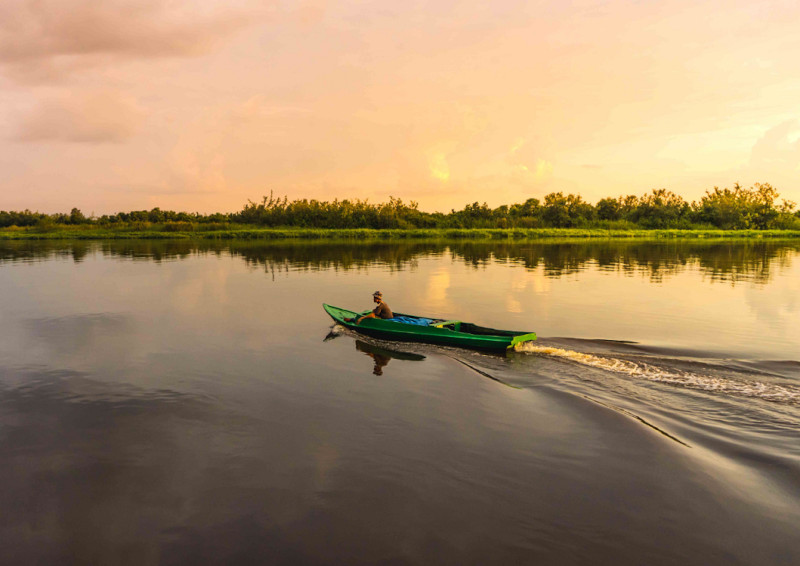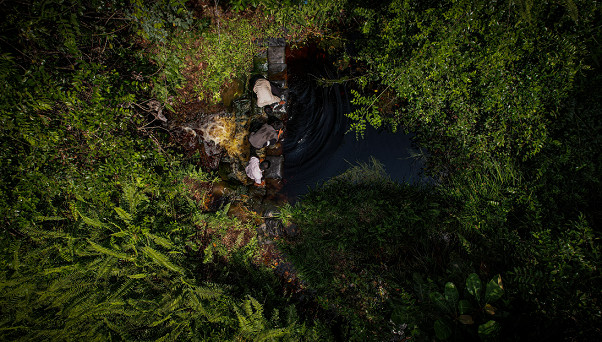January 31, 2024
It’s official: Restorasi Ekosistem Riau (RER) has been operational for 10 years. In that time, we’ve seen plenty of changes, but one thing has remained constant: RER commitment to large-scale protection, restoration, and active management of the forests in Riau. Over the past decade, RER has demonstrated how a production-protection model can deliver lasting benefits to people and nature.
RER has just released a Special Report that provides stories about RER over the decade. In this article, we’ll share some of the key findings from that report, while also reflecting on a decade of positive impacts; from creation, through various milestones on our pathway to progress, this is our journey so far.
RER is the result of a 60-year permit granted by the Ministry of Environment and Forestry of the Republic of Indonesia. Back then, when APRIL Group first established the RER program, its aim was to protect vital peatland ecosystems in Sumatra and restore the area’s biodiversity, mitigating the impacts of deforestation, drainage, and illegal logging that had gone before.
The following year, in 2014, RER was expanded to include three additional ecosystem restoration licenses.
Then, in 2015, we teamed up with Fauna & Flora to conduct the first proper investigation of biodiversity on the Kampar Peninsula. Findings from these early surveys provided the baseline information that informed our approach over the ensuing years, while also tracking our progress up to the present day.

Another key milestone on our journey came at COP21 in Paris during 2015. It was here that APRIL Group announced a US$ 100 million investment in RER that would broaden our operations and deepen our impact. Two years down the line, in 2017, The Nature Conservancy (TNC) completed an assessment for the development of a land use management plan for the Kampar Peninsula, which laid the groundwork for our next expansion.
In 2018, RER began restoring 58.2 hectares of degraded forest (an area about the size of 60 football pitches), representing our biggest accomplishment up to that point. Then, in 2019, we reached another major milestone: Forest health assessment results revealed that the forest had grown healthier since RER operations began. This was arguably our biggest win so far – it confirmed we were on the right track.
In recent years, the positive progress has continued and RER has gone from strength to strength. This is evidenced by improvements to ecosystem health and biodiversity, with some endangered species making a comeback following RER surveys, relocation, and release programs. In 2020, we teamed up with SINTAS to conduct the first ever detailed field survey of Sumatran tigers on the Kampar Peninsula. This was followed by the landmark release of Corina, a female Sumatran tiger, into the area on December 20.
That year, we also teamed up with the International Union for Conservation of Nature (IUCN) to conduct a baseline survey of Odonata (dragonflies and damselflies), which was followed by a final biodiversity baseline study completed in PT GAN by Fauna & Flora in 2021. Then, in December 2023, a total of 894 species were recorded in RER, including 78 types of mammals, 319 birds, 106 amphibians and reptiles, 90 fish, 100 odonata and 201 plants.
Past, Present, and Future: A Story of Impact and Innovation
Over the decade, RER has taken huge strides forward on our journey to restore the peatland forest ecosystems of Riau. From the initial surveys that established restoration priorities, to old canal closures, replanting programs, and the release of wildlife species, every step on this journey has taken us closer to our destination.

Comprising five concession areas and spanning 150,693 hectares of peatland – an area about twice the size of Singapore, RER has built its success around three central pillars: biodiversity, climate, and community. Today, RER concessions provide a refuge to endangered flora and fauna, 76 of which are listed as either Vulnerable, Endangered, or Critically Endangered on the IUCN Red List.
RER also focused on restoring the hydrological conditions. To date, 112 dams have been built and 36 drainage canals closed, in a long-term project that has re-wetted around 11,000 hectares of peatland swamps in the Kampar Peninsula and Padang Island.
Ten years ago, the RER program set out to repair the damage caused by years of exploitation in one of Indonesia’s last remaining peat swamp forests. Today, less than 1 percent of RER’s landscape is ‘highly degraded’ by the impacts of previous logging, drainage, and fire. And from tigers and dragonflies to the plants and trees that shape their world, biodiversity is booming once more.
RER is unique to Indonesia, but also offers a model for the protection of important and endangered ecosystems around the world. By delivering a range of positive impacts to people and nature, the program demonstrates what can be achieved through the combined application of science and corporate commitment.
As we look ahead to a new decade of operations, there are plenty of new pathways to explore and more opportunities for progress. Wherever the road may lead, anything is possible if we continue working together.
To see RER journey over the past decade, read the RER Special Report 2023.